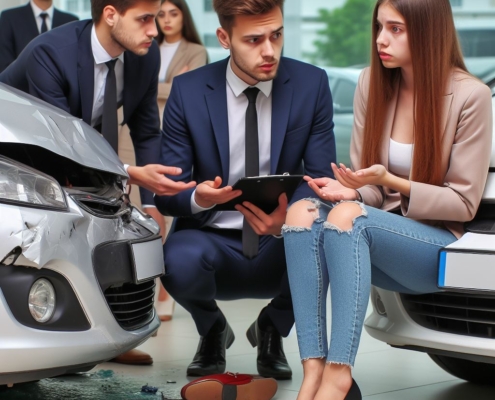What happens if you let someone else drive your car and there is an accident?
In California, many people let their friends and family use their cars. Unfortunately, there is often little to no notice before a car accident occurs. Finding out that someone you loaned your car to got into an accident can be quite problematic and annoying. Furthermore, navigating the legal concerns that arise from most car accidents can be exceedingly challenging. Lastly, the fact that someone else is operating your car can complicate an already difficult scenario.
Fundamentally, when someone else borrows your vehicle, they also borrow your insurance. This is so that your car insurance coverage covers your car, not you as the driver. In other words, if you borrow your friend’s car and they borrow yours, you are essentially exchanging auto insurance policies.
What is the fault rule in California?
A driver who causes a car accident in California is responsible for all of the accident’s damages. While their motor insurance policy may cover part or all of these damages, the full cost of a serious collision may exceed their available coverage. Your auto insurance coverage will kick in if you let someone else drive your car and they get into an accident.
Determining who was at fault might be challenging in some California auto accidents. It is advisable to work with an expert attorney not only to determine who is legally responsible for the losses resulting from a car accident, but also to optimize your insurance claim or future personal injury claim recovery. You can obtain evidence from witnesses to the accident, such as mobile phone data, traffic camera film, and eyewitness accounts, with the assistance of your attorney.
Important Things to Know About Car Insurance Following an Accident
There are a few things that all drivers should be aware of when it comes to dealing with the legal fallout after a car accident, regardless of how it occurs. First rule of thumb: always get legal advice before accepting a settlement from an insurance claim. You cannot file a claim for the same accident again if you accept a claim reimbursement. Prematurely accepting a payout could leave you with significantly less money than you have the right to. After a car accident, never talk to any insurance company without first seeing a lawyer.
Second, gathering as much data as you can from the crash area as soon as possible is essential. In the event that your driver is hurt in an accident and can do so, they ought to take pictures of the incident, themselves, and your car’s damage. In the future, these pictures might be essential to a personal injury or insurance claim.
After any car collision, speaking with a lawyer is a good idea. This is particularly true if someone isn’t directly at fault. To lower your liability and obtain significant compensation for your damages, your attorney can assist you in determining what evidence is necessary to prove that you were not at fault for the accident.
Furthermore, if someone else borrowed your car and was hurt, your personal injury lawyer may be able to assist them as well. They may also suggest that they speak with another local personal injury lawyer.
In California, is the Registered Owner of a Car Responsible for an Accident?
The victim of an accident caused by somebody other than the car’s registered owner has the right to make an insurance claim against the registered owner’s auto insurance policy. Remember that lending out your car to someone else also effectively lets them borrow your insurance coverage. As a result of the borrower’s conduct, you can incur additional fines or a premium rise.
When someone uses your vehicle but is not covered by your insurance, what happens?
Most motor insurance companies permit customers to add other people, frequently family members or spouses, to their policies. Generally, your insurance follows your automobile, so it doesn’t matter if the driver on your policy is listed. Consequently, your insurance coverage will kick in if your car’s driver caused the accident or helped to cause it, regardless of who was behind the wheel at the time.
If somebody borrows my car and gets into an accident that wasn’t their fault, what happens?
California’s fault rule applies if the borrower of your car gets into an accident and another motorist is at fault. Both the borrower and you would be able to make claims under the at-fault driver’s insurance. The cost of fixing the car may be reimbursed to you, and the borrower who was hurt may be able to get medical reimbursement from the insurance of the driver who was at fault.
How does car insurance work when you are not at fault? Your coverage may provide support without affecting your premiums.
What Happens If the At-Fault Driver Doesn’t Have Auto Insurance?
The Department of Motor Vehicles (DMV) in California highly advises that all drivers acquire both insured and uninsured driver coverage. This type of coverage can be helpful if you are in an accident brought on by an uninsured motorist, even if it is not legally required. Considering that California has one of the highest rates of uninsured drivers nationwide, it makes perfect financial sense to have this coverage in your vehicle insurance policy.



























